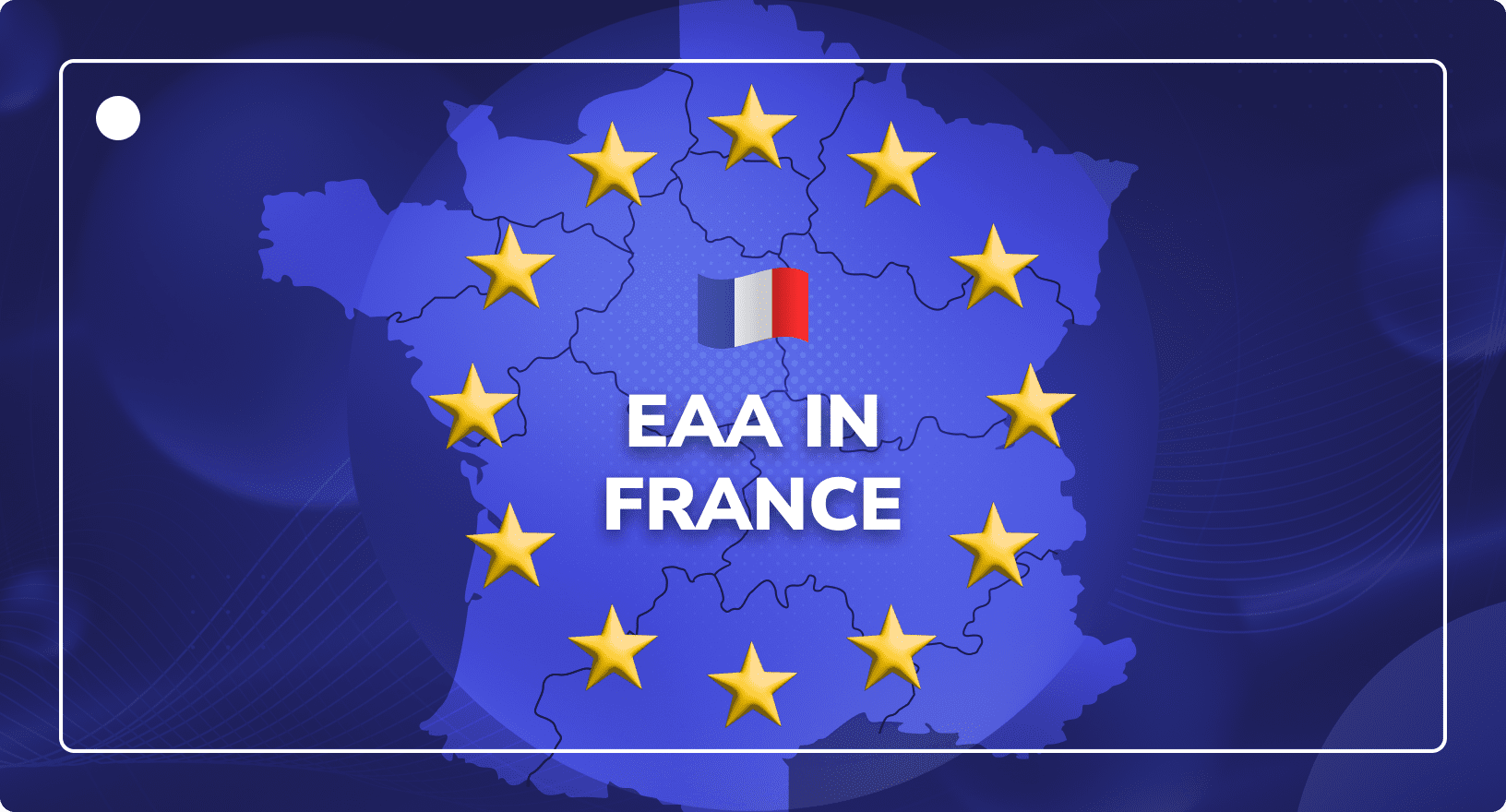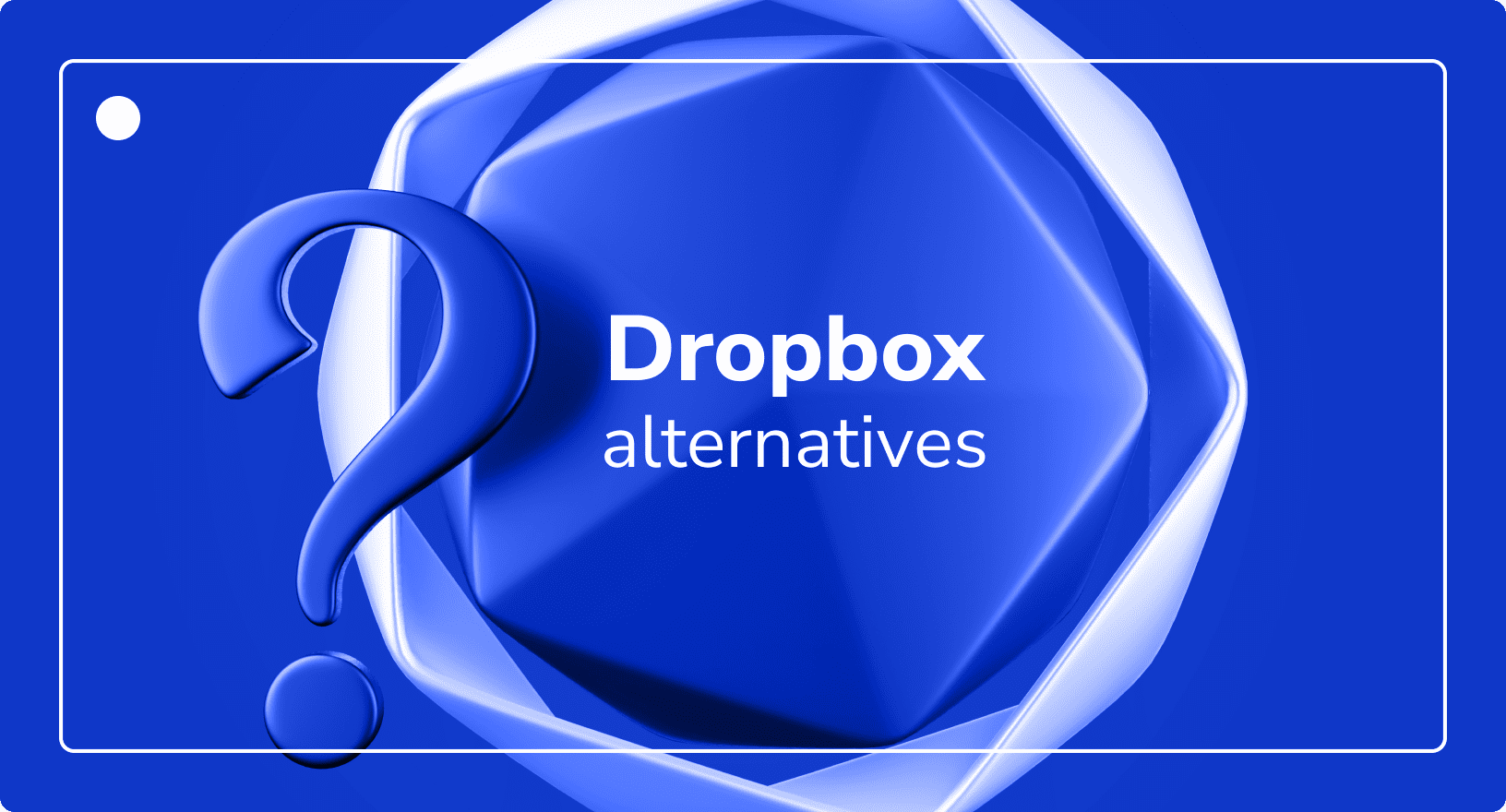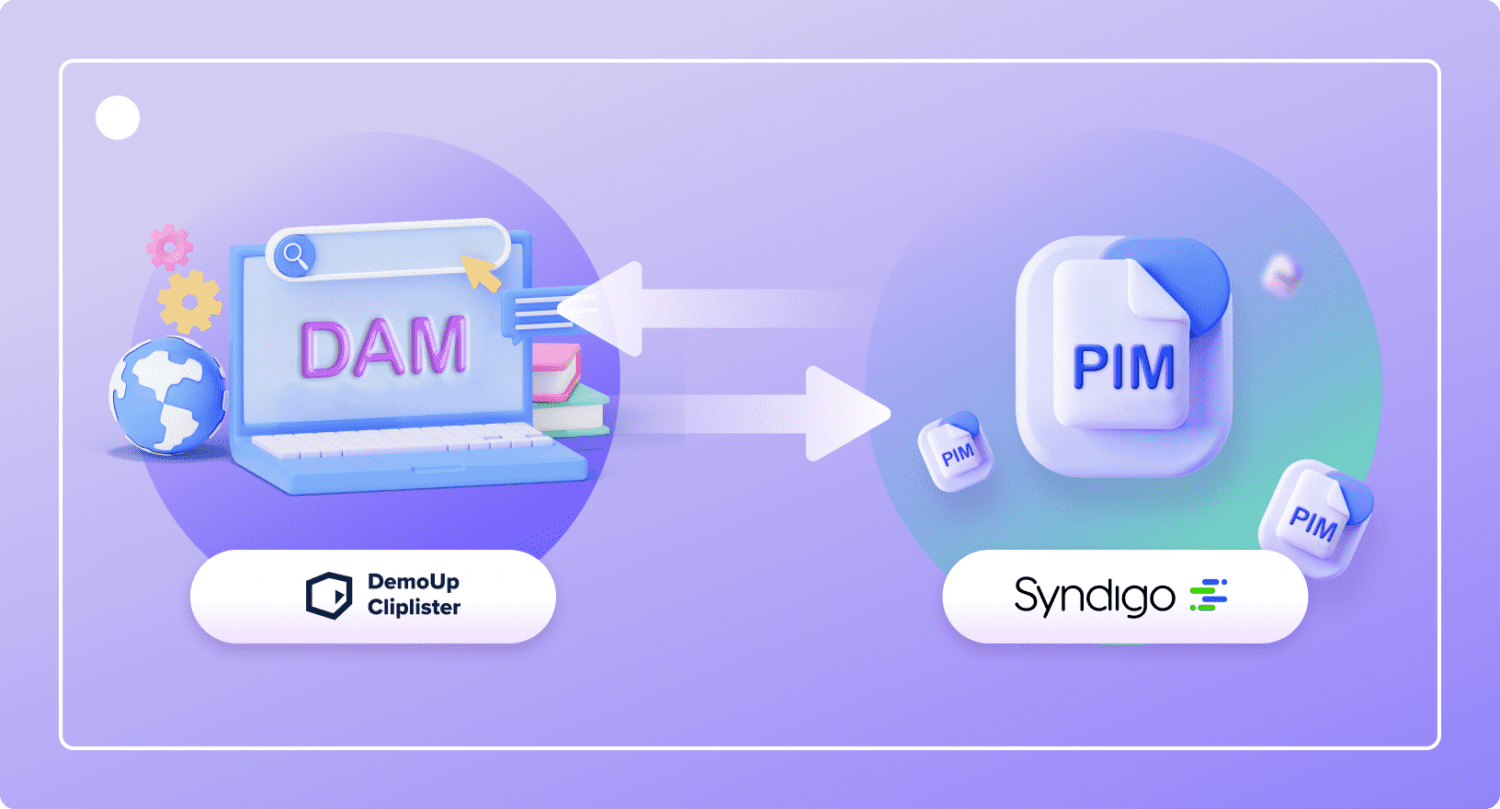European Accessibility Act In Germany: How to Comply with the Barrierefreiheitsstärkungsgesetz (BFSG)
Digital Accessibility
Updated on April 9, 2025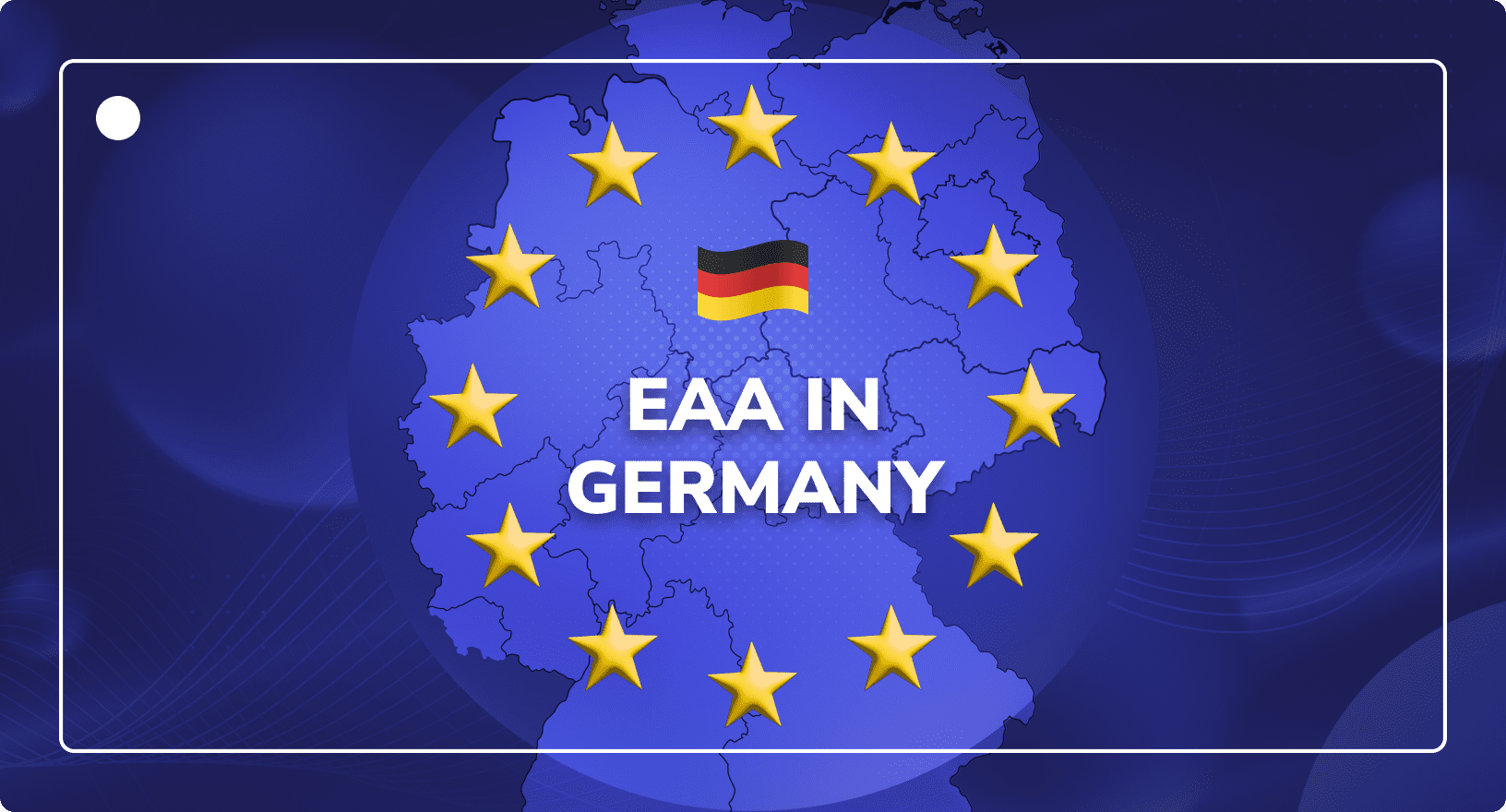
The European Accessibility Act in Germany represents a significant step toward establishing harmonised accessibility standards across the European Union. Its central aim is to remove barriers and create an inclusive environment where everyone—regardless of ability—can participate equally in society and the economy.
In Germany, the European Accessibility Act (EAA) is being implemented through the Barrierefreiheitsstärkungsgesetz (BFSG), or Accessibility Strengthening Act. Businesses and service providers operating in Germany should take note of the wide-ranging implications of the BFSG, especially as compliance becomes a legal obligation for many from 28 June 2025.
This article outlines the key elements of the EAA and the BFSG, examines the current state of accessible digital content in Germany, and provides you with the insights needed to better understand and navigate these important legal changes.

What is the European Accessibility Act?
The EAA was introduced to harmonise accessibility requirements for key products and services across the EU. Its goal is to foster a barrier-free digital and physical marketplace, enabling people with disabilities (and, by extension, everyone) to participate fully and equally in society and the economy.
The European Accessbility Act in Germany promotes universal design and ensures that accessibility becomes an integral part of how businesses develop and deliver products and services across member states.
Industries Affected by the EAA
The EAA applies to a broad range of industries, including:
- E-commerce, telecommunications services, and electronic communications services
- Financial and consumer banking services
- Public transport services, including ticketing and travel information systems
- Digital services, such as websites and mobile applications
- Hardware, including computers, smartphones, and payment terminals
These sectors are expected to ensure that their products and services are accessible to all users, including those with disabilities, by the compliance deadline of 28 June 2025.
How Will the European Accessibility Act Impact E-Commerce Services in Germany
The EAA will apply to nearly all e-commerce services in Germany. This includes services provided through online stores, mobile apps, and digital payment platforms.
These digital services must be accessible to all users, including people with disabilities. To achieve this, they are required to comply with the EAA’s accessibility standards, which are based on the Web Content Accessibility Guidelines (WCAG) 2.1, Level AA.
These guidelines offer a clear, internationally recognised framework for making web and mobile content more accessible, covering aspects such as perceivability, operability, understandability, and robustness. This is known as “POUR” and outlines the four key pillars of accessibility requirements.
The Legislation Behind the European Accessibility Act in Germany
Below is an overview of how the EAA is being implemented in Germany, and what the accessibility obligations are for organisations operating in the country.
Implementation of the European Accessibility Act (EAA) in Germany
The European Accessibility Act in Germany was transposed into national law through the Barrierefreiheitsstärkungsgesetz, known as the BFSG for short. This legislation provides the legal framework to align Germany with the EU-wide directive, ensuring that digital accessibility becomes a standard practice across the country.
The BFSG will come into force on 28 June 2025 for private sector companies as the German implementation of the EAA, requiring that digital products and services meet specific accessibility standards, primarily guided by the WCAG 2.1 Level AA framework.
Learn how to meet WCAG 2.1 Level AA standards!
Breakdown of the German Barrierefreiheitsstäarkungsgesetz (BFSG)
The BFSG outlines both immediate and long-term accessibility requirements for businesses involved in the marketing, sale, and provision of digital products and services, whether operating within Germany or serving German customers from abroad.
Its goal is to enhance accessibility in a meaningful and measurable way, ensuring that people with disabilities can interact with digital services just as effectively as anyone else. Compared to previous national accessibility requirements, the BFSG introduces broader and more future-oriented requirements that better reflect today’s evolving digital landscape.
Key Regulatory Bodies Overseeing Compliance in Germany
Enforcement of the BFSG is overseen by several key bodies, including:
- The Federal Anti-Discrimination Agency (FADA)
- The Federal Ministry of Labour and Social Affairs (BMAS)
These institutions are responsible for monitoring compliance, investigating reported breaches, and ensuring that businesses meet their accessibility obligations.
What are the Requirements for EAA Compliance in Germany?
The EAA mandates that all websites and mobile apps related to covered services in Germany must meet specific accessibility standards. These requirements are grounded in the Web Content Accessibility Guidelines (WCAG) 2.1, Level AA, which serve as the recognised reference framework across the EU.
Websites and apps for mobile devices must be designed with accessibility at the core, ensuring that people with disabilities can navigate and use digital services independently and effectively. This includes considerations for visual, auditory, cognitive, and motor impairments to provide a more inclusive experience for all users of digital devices.
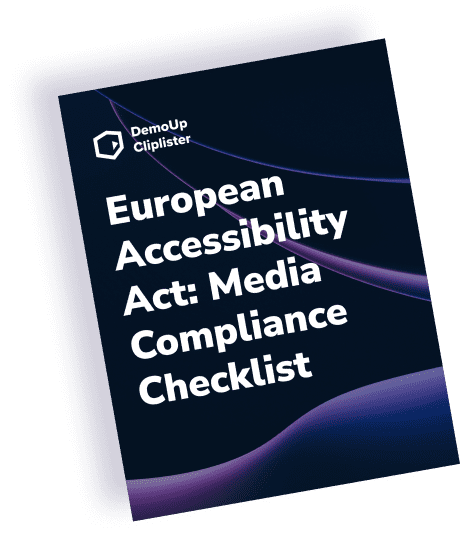
Are your assets EAA-Compliant? Find out with our free checklist!
Get it nowWho Needs to Comply with the EAA in Germany?
The Barrierefreiheitsstärkungsgesetz (BFSG) applies to a wide range of entities, each of which must meet digital accessibility requirements based on their role, services, and scale of operation. These include:
- Public sector organisations, such as government agencies and municipal authorities.
- Private companies offering services to the public, including banks, telecommunications providers, healthcare institutions, and transport operators.
- Manufacturers and distributors of products intended for use by people with disabilities.
Tailored Requirements Based on Business Size
Recognising the diversity of businesses affected by the legislation, the BFSG adjusts provisions based on company size. The regulations distinguish between micro-enterprises, small and medium-sized enterprises (SMEs), and larger organisations.
Smaller businesses, particularly SMEs, may face unique challenges in meeting accessibility obligations. The BFSG addresses this by providing scaled and practical guidelines, ensuring that compliance is achievable without a disproportionate burden.
Supporting Smaller Businesses
To help smaller organisations understand and comply, the BFSG frames accessibility in a way that is proportional to their operational capacity. This means businesses of all sizes are expected to take reasonable steps to ensure their digital services and products are accessible to everyone, including people with disabilities.
What Penalties are Imposed for Non-Compliance?
The BFSG stipulates different penalties for non-compliance, which may include fines up to €500,000. Also, individuals whose disabilities have caused suffering due to discrimination may claim compensation.
EAA Comparison Guide: Germany vs Other European Countries
Below is a comparison guide to understand the EAA in Germany vs other countries in Europe.
| Country | Legislation Name | Compliance Deadline | Penalties | Unique Aspects |
|---|---|---|---|---|
| Germany | Barrierefreiheitsstärkungsgesetz (BFSG) | 28 June 2025 | Fines up to €500,000 per violation or suspension of services. | Covers both physical & digital sectors. |
| France | Référentiel Général d’Accessibilité pour les Administrations (RNAA) | 28 June 2025 | Fines from €5,000 and €250,000 per violation and public disclosure of the violations. | Strict enforcement measures and high fines. |
| Italy | Stanca Act | 28 June 2025 | Fines from €5,000 and €150,000 per violation with mandatory corrective measures. | Stricter public sector requirements. |
| Spain | Ley de Accesibilidad Universal (UNE 139803) | 28 June 2025 | Fines from €5,000 to €300,000 per violation with mandatory corrective measures. | Requires accessibility audits. |
| Sweden | Lag om tillgänglighet till digital offentlig service (DOS-Lagen) | 28 June 2025 | Fines up to €200,000 per violation with ongoing mandated audits. | Applies broadly to private and public sectors. |
Risks of Non-Compliance with German Accessibility Requirements
Legal implications include penalties and lawsuits. On a parallel note, cost estimations for the accessibility program under consideration need to be compared against compliance costs. Loss of reputation due to insufficient audio visual media services, customer impotence, and the effects of the mainland.
Consequences of Non-Compliance with Legislation on Accessibility in Germany
- Legal Consequences: Any organisation that fails to comply with the BFSG’s accessibility requirements risks prosecution, including charges, fines, and lawsuits. The gravity of the violation and the magnitude of any given organisation will determine the level of the fine imposed.
- Financial Impact: The flip side includes such a broad financial impact. The cost of fighting an accessibility lawsuit is often relatively high and, in many cases, way more than the cost incurred by accessibility in the first place. Organisations may have additional costs to retrofit products or services to meet accessibility standards.
- Reputational Risks: Accessibility violations are counterproductive in terms of reputational value. They create unwanted negative publicity, causing unsatisfied customers and market share losses. Organisations that pursue accessibility appear to prioritise inclusiveness and social responsibility, thereby enhancing their reputation and brand image.
Examples of Real-World Accessibility Lawsuits and Penalties
Though the BFSG has not been on the books for long, there might not be many examples of suits and penalties at this early stage. There are a few from other jurisdictions that tell the possible consequences of accessibility violations. These can make good cautionary tales for organisations working in Germany.
An example is that of Domino’s Pizza, which was sued in the United States for having a website and mobile apps that were inaccessible to people with disabilities. Guillermo Robles sued Domino’s for having an inaccessible website to visually impaired persons. The suit ended in a settlement with Domino’s agreeing to make the site more accessible.
All of the above can demonstrate that actions carry potential legal and financial liabilities and damage to public perception. Organisations should prepare for these issues by prioritising accessibility with the BFSG, thus creating an environment that is more inclusive and open to all possible audiences.
Of course, these things are hard to interpret. As of now, we cannot elicit more specific examples of lawsuits and penalties brought under the BFSG and the EAA in Germany, as it is quite a new law among the private sector.
However, many cases from other jurisdictions can give a glimpse into how serious accessibility violations might be for the entities involved.
Steps to Comply with the European Accessibility Act in Germany
Now, let’s look at a few steps that can help with compliance. These are basic requirements for the BFSG.
Carry out Accessibility Audits
- Conduct an in-depth accessibility audit of all your digital assets, including websites, mobile applications, and any other digital content, through the combination of automated tools and manual testing.
- Identify areas of non-compliance with web accessibility standards, such as WCAG 2.1 AA, for listing and remediation with the help of a market surveillance authority.
- Prioritise the discovered accessibility issues based on severity and impact on users with disabilities.

Are your assets EAA-Compliant? Find out with our free checklist!
Get it nowHave Measures for Web & Mobile Compliance
Confirm that websites and mobile applications meet the Web Content Accessibility Guidelines (WCAG) 2.1 Level AA success criteria by providing descriptions for images, captions of videos, keyboard navigation, and contrast. Scenarios like digital payment, checkout processes, and customer service must be accessible to users with disabilities.
For example, ensure all forms are compatible with screen readers and that customer support can be reached through multiple means – phone, email, or chat. Promptly instruct and provide users with relevant feedback whilst making error messages constructive and actionable. Use the services of a market surveillance authority for this.
Train Teams on Accessibility Best Practices
Comprehensive training of developers, designers, content creators, and customer support cubbies on accessibility principles and best practices in the profession is essential. Educate teams on the importance of inclusive design and how disabled people can be affected by non-accessible content. Build an environment in which your organisation fosters accessibility, where accessibility considerations run through the processes of designing and developing your organisation’s assets.
Work with Accessibility Consultants & Testing Services
Engage third-party accessibility consultants to conduct independent audits of your digital assets and validate your compliance efforts. Leverage the expertise of accessibility testing services to identify and remediate accessibility barriers. Collaborate with access specialists to formulate and implement a holistic accessibility strategy.
Monitor & Maintain Accessibility Over Time
Regularly test your digital assets for accessibility and add any new problems that arise. Keep learning about changes to accessibility standards and regulations to make the necessary shifts in the compliance program. Consistently monitor user feedback and administer it to your accessibility development. Integrate accessibility into your organisation’s culture as an ongoing priority and consistently empower it in every aspect of your digital presence.

Are your assets EAA-Compliant? Find out with our free checklist!
Get it nowThe Future of Accessibility in Germany: What’s Next After 2025?
This section will look at the future of the EAA and what one can expect.
Possible Legal Changes
Higher Penalties for Noncompliant Acts: With increasing awareness and enforcement of accessibility regulations, there may be increased penalties for acts of noncompliance with laws. This means stricter fines, stricter legal actions, and more reputational harm will be brought upon organisations failing to meet accessibility regulations. A market surveillance authority will help you understand how to comply with the laws.
Applying to More Industries: The BFSG currently applies to some sectors, namely those involved with websites and mobile applications in the public sector. The future may hold extended coverage for more industries and businesses to ensure inclusivity in the use of digital products and services for everybody, regardless of ability.
Technological Innovations
AI and Automation for Accessibility: With a set of freely available AI and automation tools, the world of digital accessibility is set for a paradigm shift. This technology could automatically generate alt text for images, offer real-time captioning during videos, and even tailor experiences as per individual needs and preferences and helps you future-proof against accessibility requirements coming in the future.
Inclusive Design: Inclusive design is an essential legal requirement, but it is also a critical strategic business case. Most organisations will attract a wider audience if products and services are developed in ways that all can use, thereby aiding in satisfaction and creating a positive brand personality.
Driving Innovation and Creativity: Inclusive design provides different ways of looking at things, and thus, it must be used to think outside the box and develop solutions that are beneficial for all users. This opens the door for more innovative products, processes, and business models that will bring the company success and growth.
Click here for more on designing EAA and BFSG-compliant websites!
Meeting BFSG and EAA Requirements with DemoUp Cliplister
At DemoUp Cliplister, we are dedicated to helping you make your media assets accessible according to industry standards. Our modules help you ensure compliance with new accessibility requirements like the BFSG or EAA for all your media assets.
Generate Missing Metadata
Full compliance with accessibility standards requires the generation of missing metadata. Use DemoUp Cliplister for your videos, 3D models, and more. When the correct metadata is added, your content becomes friendlier to access for all customers.
Retailer Approvals & Compliance Scans
Under the EAA in Germany and Europe at large, retailers will bear the brunt of the impact. Therefore, most marketplaces and online stores will have strict requirements for content uploaded to their pages.
That’s why we’ve baked compliance checks right into our syndication software. As soon as you upload, we automatically validate your videos, 3D models, and product images so you know they’ll render perfectly across every retailer in our network. No guesswork. No delays. Just faster approvals and more eyes on your product.
EAA Compliant Player
If you’re a retailer, all the videos uploaded to the DemoUp Cliplister network are available through an EAA-compliant player. This player guarantees that your product videos are accessible to users with disabilities while meeting the EAA requirements.
Wrapping Up
Compliance with the EAA in Germany and the BFSG is an obligation for e-commerce businesses. The way forward is to carry an ethos of inclusivity and equal access provided to all potential customers. You can start with writing an accessibility statement.
Therefore, having knowledge about the key standards and taking active steps toward implementing them can save you from prosecution, enhance your company’s image, and give you access to a wider customer base.
For more information and support regarding the European Accessibility Act in Germany, the BFSG, or digital accessibility in general, feel free to check out the blog.
To see our full product portfolio, visit the homepage.
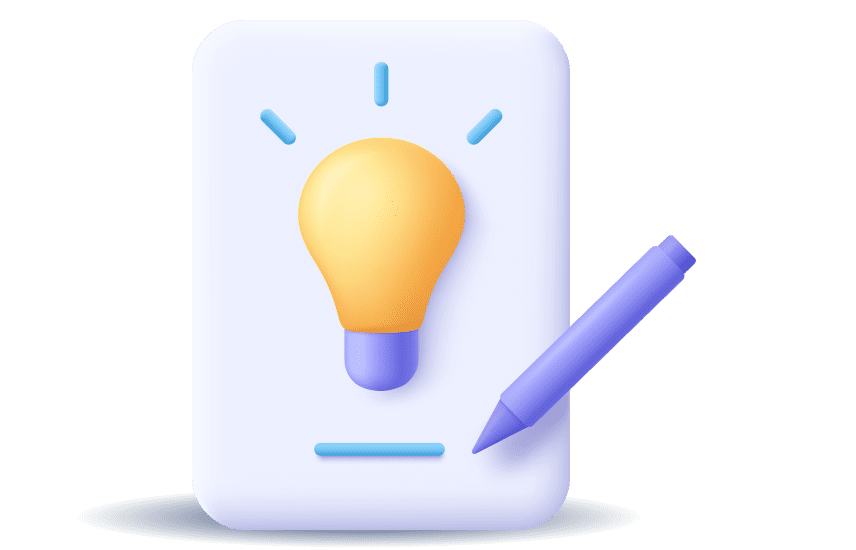
Frequently Asked Questions
To elaborate on the subject, we have compiled a list of frequently asked questions concerning the EAA in Germany, the Barrierefreiheitsstärkungsgesetz (BFSG), and its impact on e-commerce businesses.
The Barrierefreiheitsstärkungsgesetz (BFSG) is Germany’s national implementation of the European Accessibility Act (EAA). It translates EU accessibility requirements into German law, mandating that digital products and services across sectors (especially e-commerce and finance) be accessible to all users, including people with disabilities, by June 2025.
Failure to comply with the BFSG and EAA in Germany would result in serious sanctions, including fines and lawsuits that could, in many cases, amount to millions of euros in value. The exact sanctions would depend on how serious the offence is, taking into account the size of the company.
In addition, any retailer that is not in compliance runs the risk of damage to its reputation and loss of potential customers. Businesses should consider hiring the services of a market surveillance authority to help understand and implement the act better.
BFSG compliance in German e-commerce requires accessible websites, mobile apps, and digital payment systems. Key elements include an inclusive checkout flow, accessible self-service features, and adherence to WCAG 2.1 AA standards to ensure equal access for users with disabilities by June 2025.
The BFSG accessibility requirements will come into force in Germany on 28 June 2025. From this date, affected businesses must ensure their digital products and services comply with accessibility standards outlined in the European Accessibility Act (EAA).
The BFSG enforces the EAA in Germany by legally requiring businesses to make digital products and services accessible. It sets national compliance rules, monitored by authorities like the Federal Ministry of Labour and Social Affairs and FADA, ensuring adherence to EU-wide accessibility standards.
Better Content. More Sales.
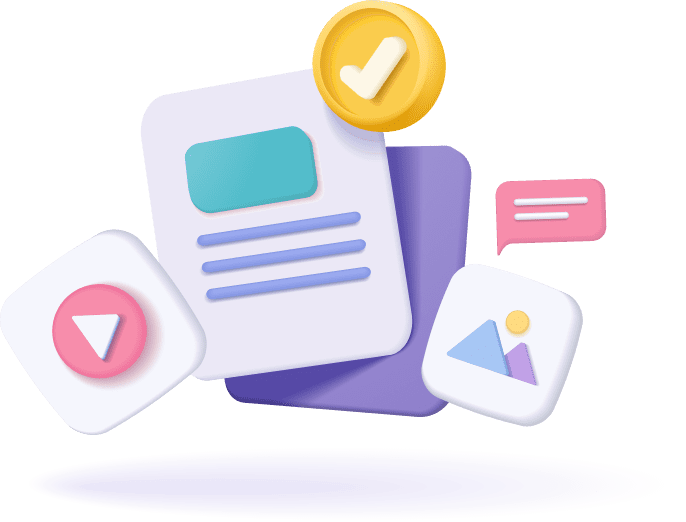
Fill out the form to discover our end-to-end eCommerce content solutions for brands & shops
